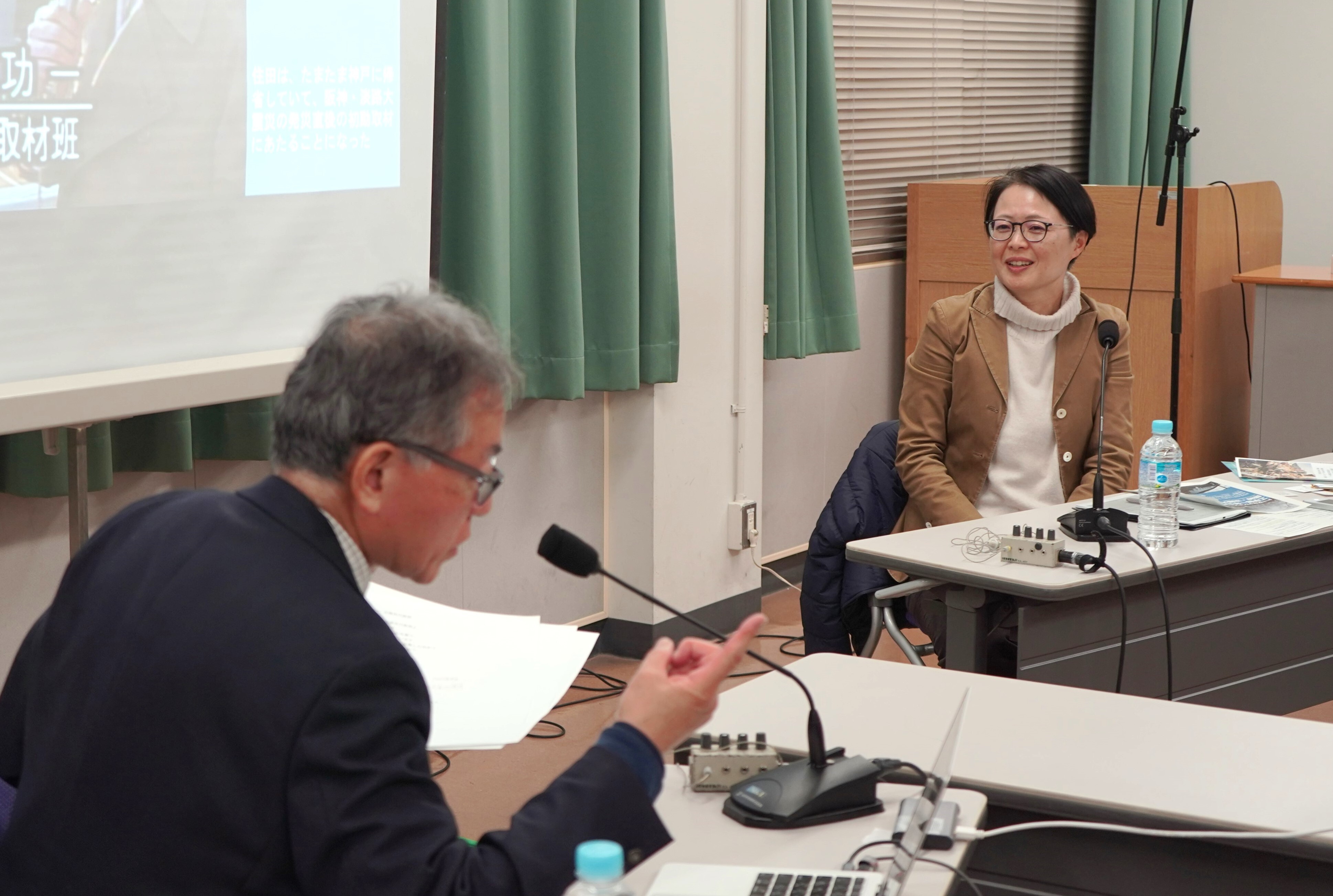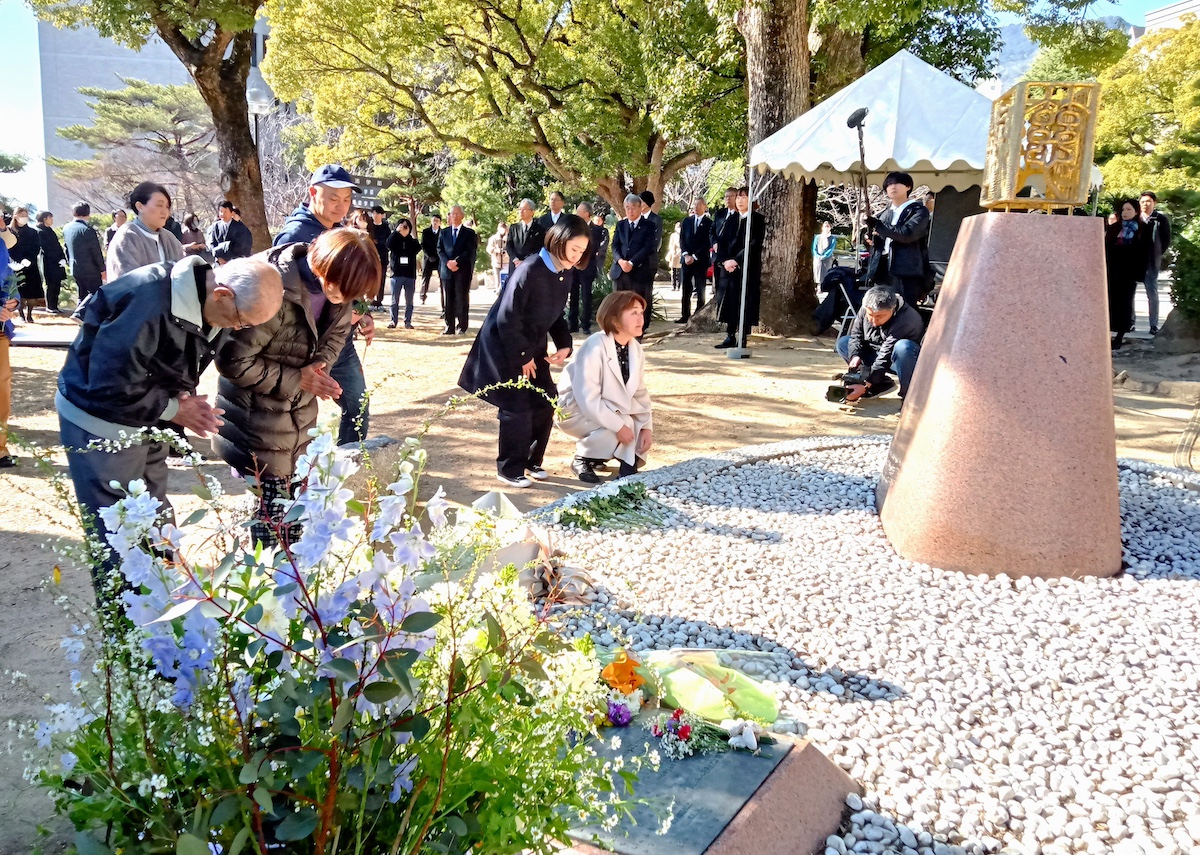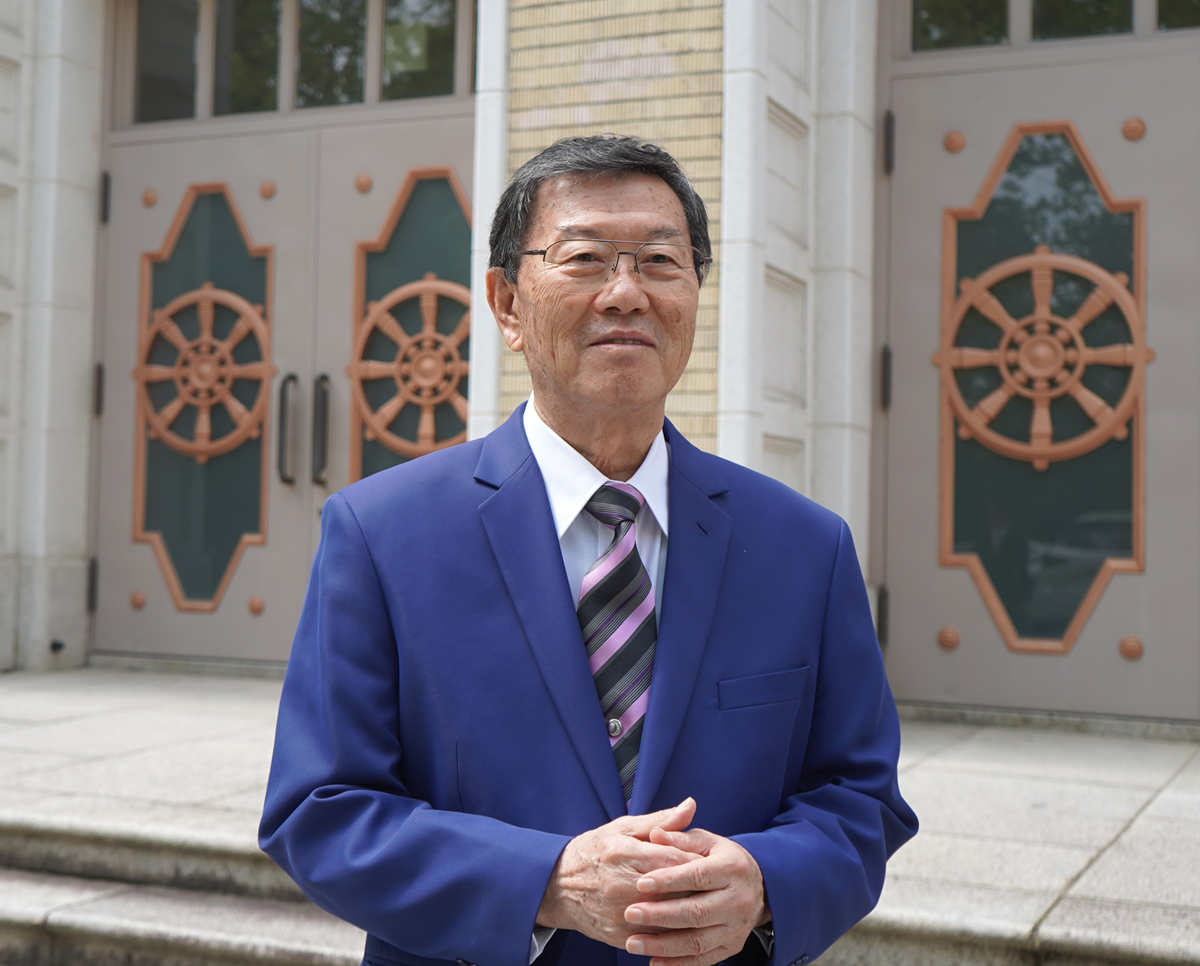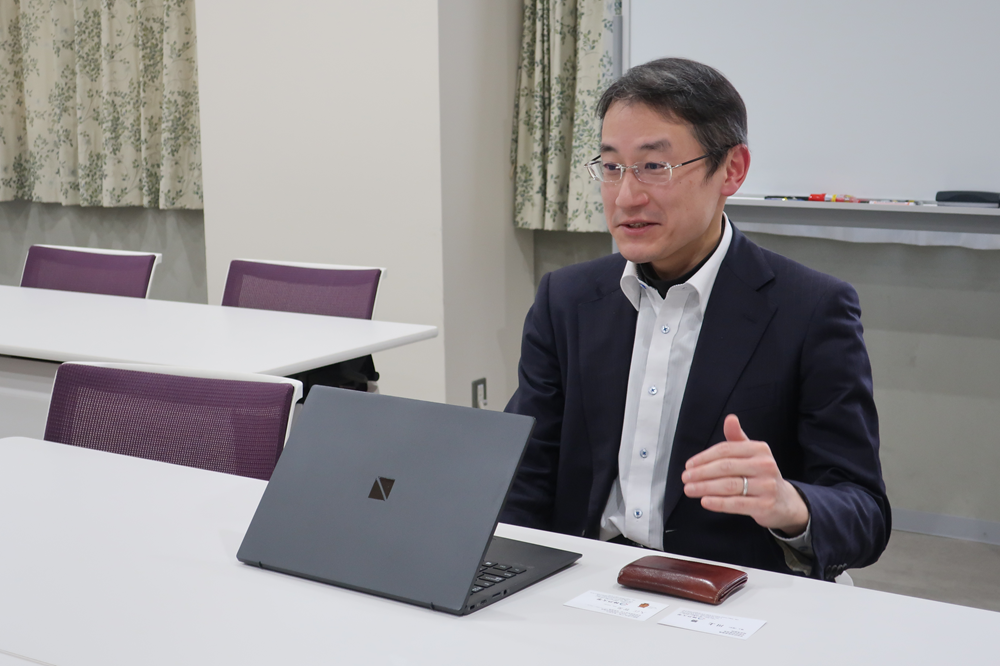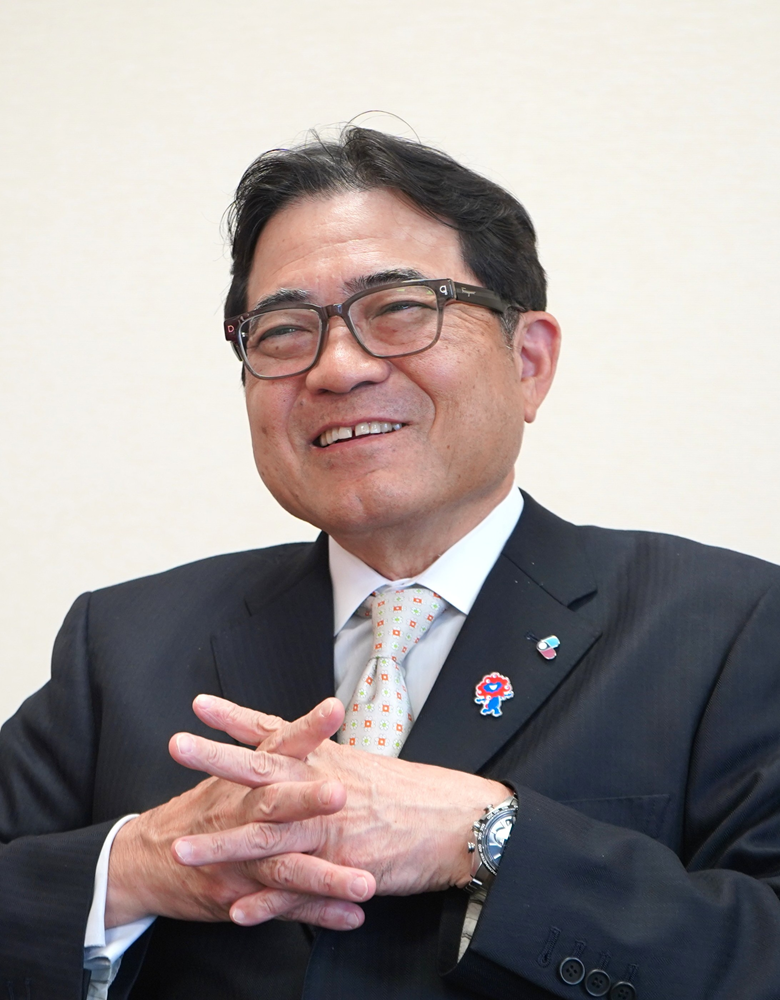
Kobe Airport, Kobe’s gateway to the skies, began offering international charter flights on April 18. The airport also plans to begin offering regular international flights from around 2030, which should swing the door wide open for exchange with the rest of the world. At the helm of these endeavors is YAMAYA Yoshiyuki, Kobe University alum and representative director and CEO of Kansai Airports, which operates Kansai International Airport, Osaka Itami Airport and Kobe Airport. In his 10th year as Kansai Airports CEO, how does Yamaya feel about the future of the region from a global perspective now Expo 2025 is in full-swing? We asked him about his life path from his time at Kobe University until now, as well as his suggestions for Kobe and the entire Kansai region.
Developing Kobe Airport will cause tourism in Kansai to thrive
On the morning of April 18, international charter flights from Taiwan and South Korea began arriving at Kobe Airport. A commemorative ceremony was held to celebrate the opening of the brand-new Terminal 2, where Yamaya greeted attendants with a smile, saying, “It is from this point forward that Kobe Airport will begin to grow. Once that happens, tourism in the Kansai region as a whole will thrive.” Overcoming the COVID-19 pandemic and offering international flights for the opening of Expo 2025 marked a new start for Kobe Airport.
To Yamaya, Kobe is a beloved city where he spent 4 years as a university student. After taking an interest in agriculture as confusion and fears of a food crisis due to the ongoing oil crisis began to spread while he was at Otemon Gakuin Senior High School, he entered Kobe University’s Faculty of Agriculture in 1976. He was also influenced by a senior member of his high school’s soft tennis club, YASHIRO Mitsuo (former director and senior managing executive officer, Itoen Ltd.), who was already enrolled there.
During his time at the university, he drove his car all throughout the Kansai area, visiting many famous places. These experiences have proven useful in his current line of work, which is also deeply connected to tourism. Yamaya also says that the things he learned at the Faculty of Agriculture have served as the foundation for his own way of thinking as someone who has worked at the top of various organizations.
“The Faculty of Agriculture handles living things, be they plants or animals. Caring for living things makes them grow, but not if they’re neglected. The same goes for employees. I like to think I learned that principle at the Faculty of Agriculture.”
Just before graduating, after thinking about what kind of era is on the horizon, Yamaya chose to work at Orient Leasing (now ORIX), a pioneer of the leasing industry. “The company seemed like a bit of a strict meritocracy, but I felt as though it met the needs of the times and that it was a company that was bound to grow.” Those thoughts turned out to be correct, as the company branched off into all kinds of new fields, such as banking, hotels, and even management of a professional baseball team. In December of 2015, ORIX teamed up with an airport management company in France to establish Kansai Airports, which manages airports such as Kansai International Airport. Yamaya was appointed as its first CEO.
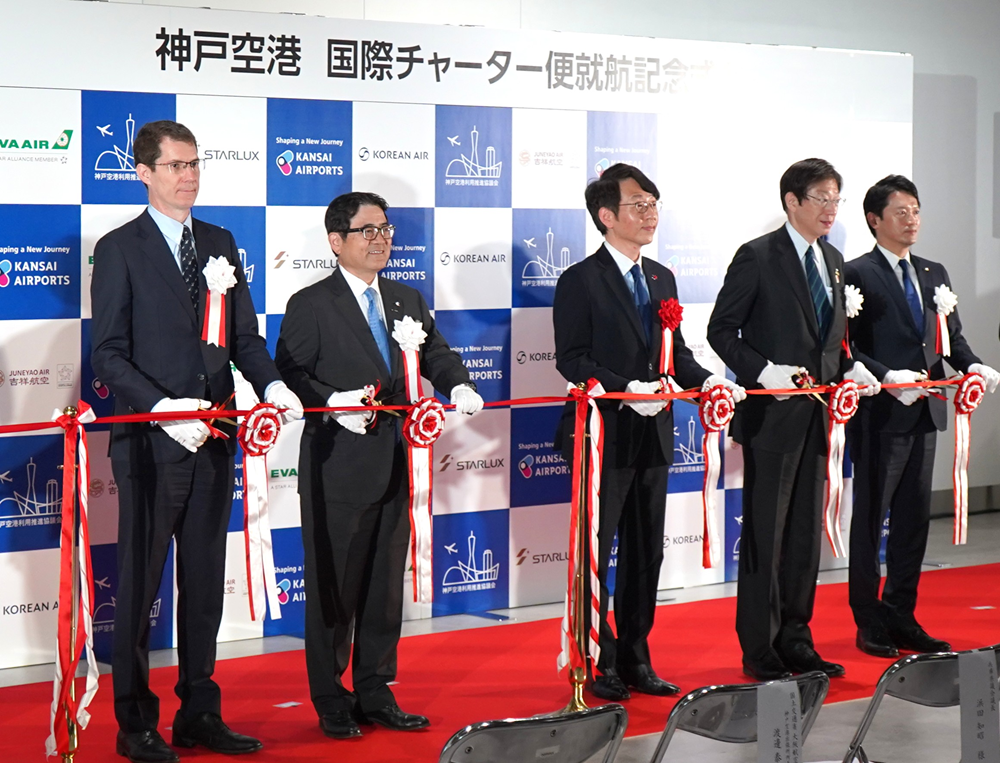
Half of his corporate life has been at the top
Half of his 45 years as a corporate employee has been as a CEO. When he became CEO of ORIX Trust and Banking Corporation (now ORIX Bank Corporation), he was just 45 years old. “When I was looking for a job before graduating, I said to myself that I would absolutely not be working in a serious field like banking,” he said with a sarcastic laugh, but he ended up diving into the unfamiliar industry at an unusually young age.
“After giving it a try, I learned a lot. With banks, the day isn’t over until all accounts are settled. In this system, information about the daily goings-on is sent to the CEO. At the time, I hadn’t seen such detailed information sent to any CEO at my previous positions, so it was quite the surprise to me, but it allowed me to learn about the various mechanisms of banks.”
He continued to lead companies in fields he had never experienced before, such as in real estate and airport management, but he never felt unsure of himself as a CEO.
“I’m often asked how I can run businesses in such a variety of fields, but ORIX has always pioneered its own business without fitting into any one category. No matter the business, problems will always arise, and you just need to find solutions to them when they do. That’s just how I think about it.”
After the enforcement of the “Law concerning the operation of state-managed airports and other facilities utilizing the capacity of the private sector” in 2013, outsourcing of management to the private sector really took off. Kansai Airports took over management of Kansai International Airport and Osaka Itami Airport in 2016 and of Kobe Airport in 2018. This method, called a “concession agreement,” sees airport management rights sold to private organizations while bodies such as the government or a local municipality retain ownership of the airports themselves. This was the first time that this method was ever employed for a large-scale airport, a move that would give rise to a business expected to influence the future of the economy in Kansai.
The past 10 years had its share of crises. In 2018, tossed around by Typhoon Jebi, a tanker crashed into the side of the connecting bridge for Kansai International Airport, stranding those left behind at the airport. The COVID-19 pandemic that began in 2020 caused a huge decrease in travelers, and in its wake an uncertain future loomed.
Yet even so, he never took a negative attitude. The tanker accident during Typhoon Jebi stranded as many as 8,000 people, but Yamaya tells us, “I think I would have had to step down as CEO if even one person died. We were very lucky that there were no casualties.”
As for global pandemics, Yamaya assumed that the effects of a potential pandemic would cut traveler numbers in half and that it would take a year for those numbers to recover, based on numbers from the SARS pandemic that took place from 2002-2003. While the actual effects of the COVID-19 pandemic far exceeded those predictions, Yamaya says that “using SARS as a benchmark to secure funding allowed us to make it through.”
The strength that allows him to overcome these crises comes from his personality, one that is “never pessimistic.” “If thinking about a situation will allow me to solve it, I’ll think about it, but if not, I just won’t. If a situation involves another person, as long as we both have the willingness to reach a resolution, there will always be something we can come to agree upon.”
Wanting young people to look at the world with a focus on Asia
So, how does Yamaya, who has seen trends in Kansai, in Japan and in inbound passengers all from a global perspective, now feel about the current state of the city of Kobe and its future challenges?
“When I was a university student, Kobe was the place for trends in fashion. However, due in part to the effects of the Great Hanshin Awaji Earthquake, that former brilliance has been lost, and now we must endeavor to reevaluate and rebuild the city.”
Yamaya thinks that connections with vibrant Asia should be emphasized during this process. He says, “In particular, the young people who will traverse this new era should take a good look at Asia, including India, and build connections.” Expected to provide a foothold for this is Expo 2025 Osaka, Kansai. “I also want the young people of Kobe to experience the different peoples and cultures of the world at the expo. Those experiences will surely have an impact on the future of Kobe as well.” With its deep ties to China and India after opening its port some 150 years ago, Kobe also has the makings of a city that can develop and expand relationships with Asia.
This February, at the 63rd Kansai Economic and Management Summit, which was hosted in Kobe on the occasion of the 30th anniversary of the Great Hanshin Awaji Earthquake, Yamaya touched on the importance of disaster prevention strategies that emphasize the safety and security of travelers from overseas.
“Japan has a lot of natural disasters, but if foreign tourists can say that they ‘felt secure even during a disaster event,’ then that valuation will outweigh the risks. When thinking of how to develop tourism businesses, it’s important to consider how to protect tourists in the same way that municipalities protect their residents and companies protect their employees.”
He proposes that Japan’s high public safety and cleanliness levels be used to appeal its safety and security to the world and to prepare to be able to utilize that strength even in times of disaster.
Now that Kobe’s skies are connected to five cities in South Korea, China and Taiwan, such perspectives have become increasingly important when pondering the future of the city. “We have a lot to learn from the rest of the world. How will we open our country moving forward? I have high hopes for the creativity and inventiveness of our young people,” says Yamaya. He will continue to peer through his portal to the skies to keep a close eye on the relationships shared between Japan and the world.
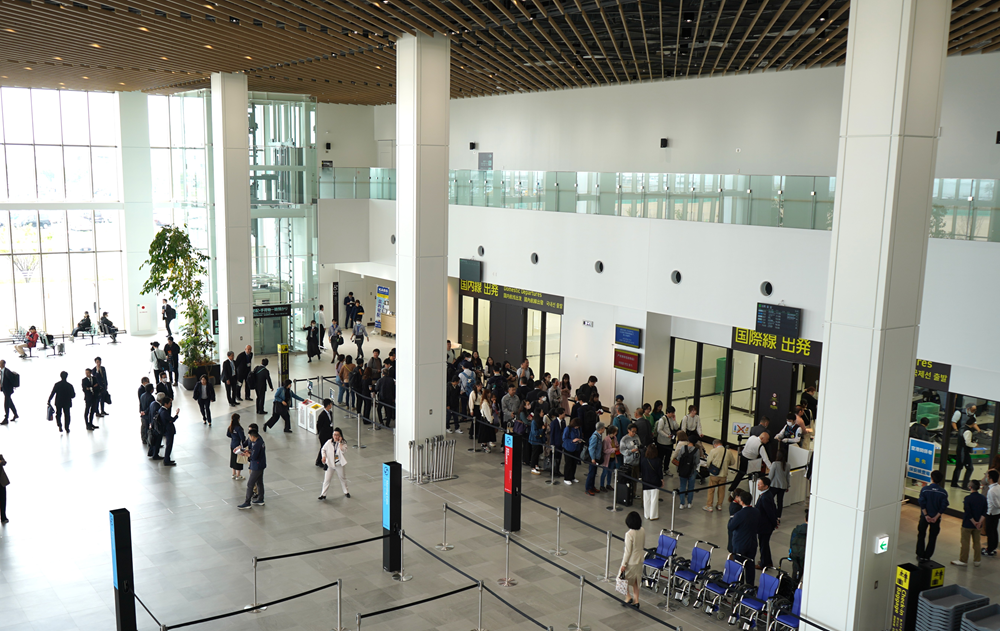
The globalization of Kobe Airport
Since opening in 2006, only domestic flights were available at Kobe Airport until April 18, 2025, when the airport began offering international charter flights. 40 round-trip flights a week are offered to 5 cities — Seoul in South Korea, Shanghai and Nanking in China, and Taipei and Taichung in Taiwan — with as many as 6 round-trip flights from 4 airlines offered each day. During Golden Week (a period of consecutive public holidays) in late April and early May of 2025, charter flights to Vietnam were offered for travel agency tours. Regular international flights are forecast to begin service around 2030.
Resume
Born in Suita, Osaka in 1956, graduated from Kobe University’s Faculty of Agriculture in 1980 and entered Oriental Leasing (now ORIX) the same year. In 2002, became the CEO of ORIX Trust and Banking Corporation (now ORIX Bank Corporation). In 2009, became the CEO of ORIX Real Estate Corporation. Became CEO of ORIX Credit in 2014 and director and deputy president of ORIX in 2015. Appointed representative director and CEO of Kansai Airports in December of 2015. When the professional baseball team ORIX Blue Wave won the league championship in 1995, the same year as the Great Hanshin Awaji Earthquake, led a project team in the President’s Office of ORIX to encourage the team.




